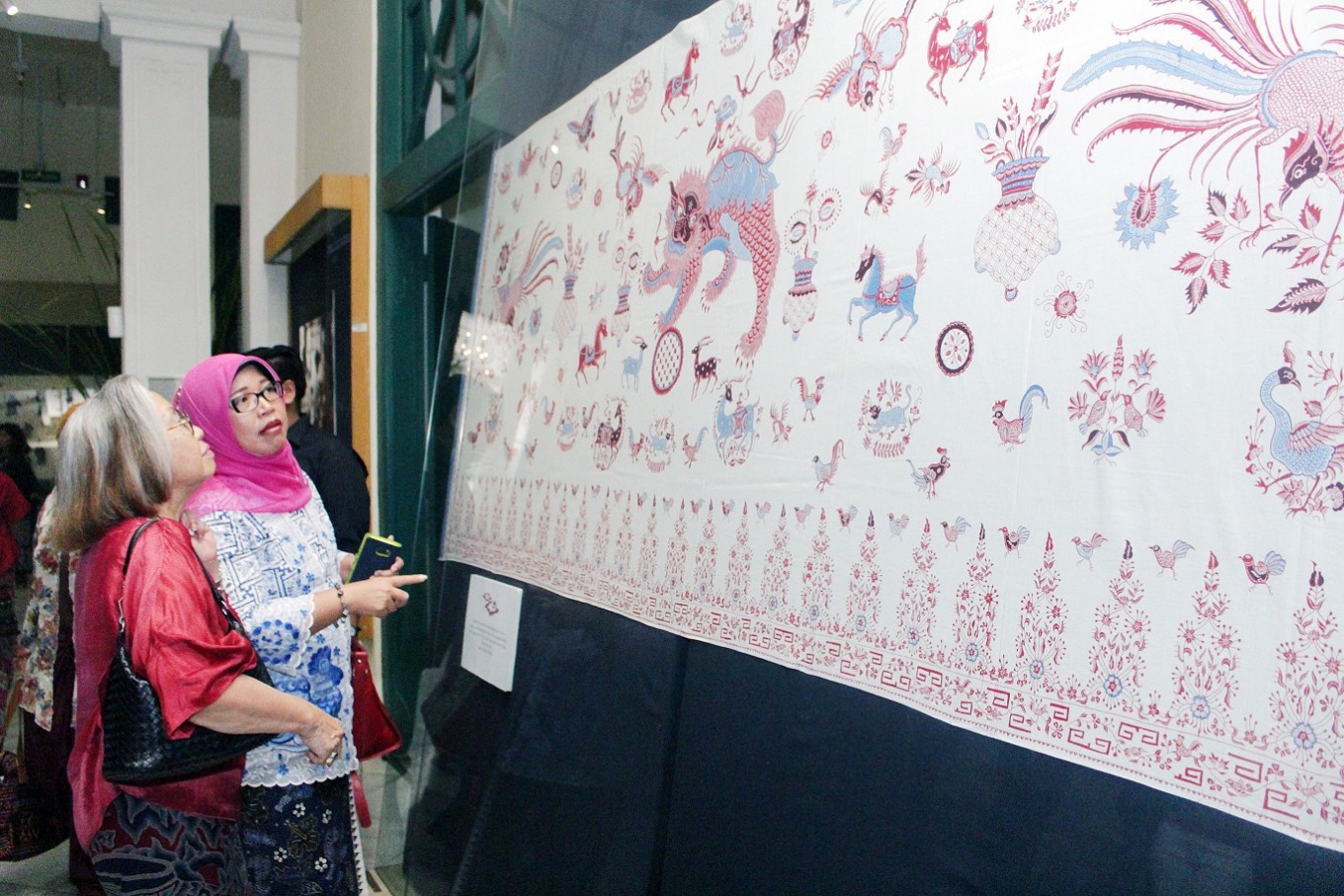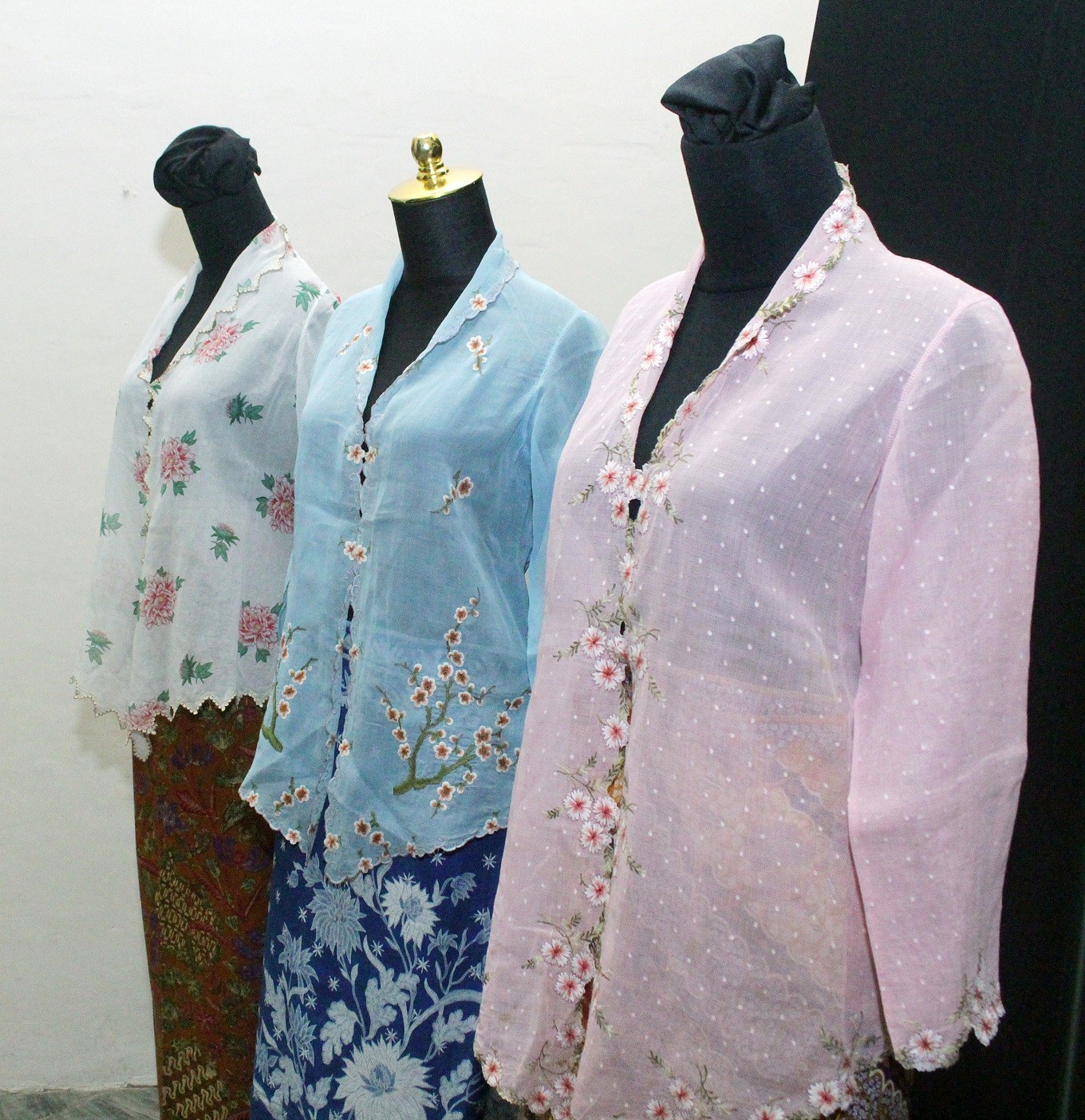Exploring 'Peranakan' influence in batik exhibition
The ongoing exhibition “Peranakan Influence in Batik Pesisir Motifs” displays at least 60 fabrics from the collection of Tumbu Ramelan, the chairperson of the Indonesia Batik Gallery and an executive at the Indonesia Batik Foundation.
Change Size
 Animalistic design: Visitors take a closer look at a piece of batik pesisir with a bang biru (red and blue) motif at the Textile Museum in Tanah Abang, Central Jakarta. (JP/Bagas Rahadian)
Animalistic design: Visitors take a closer look at a piece of batik pesisir with a bang biru (red and blue) motif at the Textile Museum in Tanah Abang, Central Jakarta. (JP/Bagas Rahadian)
E
ven for people new to batik, it’s easy to differentiate between the fabrics produced along the coasts of Java and the inland batik keraton made in Surakarta, or Solo, as the town is popularly known, and Yogyakarta. The elements that distinguish batik pesisir are mostly the variations of color and motifs as opposed to solemn brown, black and white with philosophy-laden motifs that characterize the batik used only by the royal families in the past.
“Batik pesisir is more populist and even until now it can be used by anybody on any occasion,” said Notty J. Mahdi, a researcher from the Indonesian Anthropology Research Forum (FKAI).
In a public discussion to open an exhibition at the Textile Museum in Tanah Abang in Central Jakarta on March 21, she revealed the historical traces of the assimilated Chinese community living along the Java coast, also known as Peranakan.
“They sailed with the fleets of Chinese Admiral Cheng Ho to Indonesia. They arrived at the ports that extended along the coast from Semarang to Tuban,” she said.
Read also: Peranakan culture: Major influence on batik, fashion
Batik pesisir is currently used in reference to the batik made in the coastal cities of Cirebon and Indramayu in West Java, Semarang, Pekalongan and Lasem in Central Java as well as Tuban and Madura in East Java.
From research, Notty found that in the past, batik pesisir was not mass produced as the textile was primarily a mere pastime activity for farming women waiting for the harvest season.
“They sold it for little money and they could customize the motifs as requested by buyers or foreign traders. That’s the reason batik pesisir has no binding rules as in who, how and where to wear it.”
The ongoing exhibition “Peranakan Influence in Batik Pesisir Motifs” displays at least 60 fabrics from the collection of Tumbu Ramelan, the chairperson of the Indonesia Batik Gallery and an executive at the Indonesia Batik Foundation.
“We work together with the researchers to disseminate information and knowledge to the public in the hope that people can better understand and appreciate batik,” Tumbu said at the opening of the exhibition organized by the batik foundation and FKAI.
The cultural assimilation enriched the motifs in batik pesisir with flowers, animals and mythical beasts such as dragons and phoenix, or qilin. European-influenced motifs such as horse-drawn carriages can also be detected.
The red hue, which could only be produced in Lasem, is of Chinese-influence, while Pekalongan is still recognized for its special blue dye.
Read also: Five tips to host a Peranakan-themed wedding
Although batik pesisir did not hold any strict rules, Notty said there was a custom in Peranakan culture that differentiated the wearers by the colors of the batik.

“Single women wore bright colors such as pink and after marriage they were supposed to wear red. The older they get, they would wear blue, symbolizing the sky. On their burial, they were supposed to wear batik dominated by white colors.
“The flower motifs can also tell the marital status of the wearer but that only happened in the past. Such customs no longer apply nowadays.”
Another interesting fact is that Peranakan-influenced batik was only developed along the coastal areas despite trading activities and assimilation through marriage, which might have brought the motifs and the colors to other parts of Indonesia, or even overseas.
“The batik artisans of Peranakan families mostly lived along the coastal areas for generations,” said Notty.









